HISTORICAL MINIATURES JOURNAL ISSUE NUMBER 11
PUBLISHED BY GEORGE GRASSE
|
PHOTO TOUR
OF THE MARCH FIELD AIR MUSEUM, PART 1 (up to WW2)
RIVERSIDE,
CALIFORNIA, SEPTEMBER 2010 |
By George Grasse
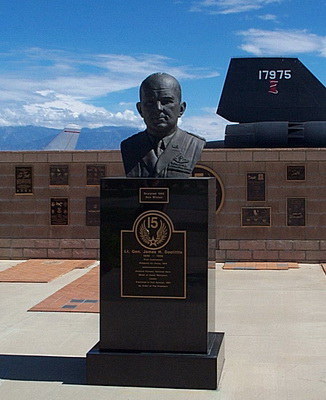 |
|
#1: The pathway to the entrance takes you through a
rather remarkable memorial area called "Heritage Courtyard". This view is
to the left (east) as you walk towards the entrance and shows the USAAF 15th Air
Force Memorial Wall in the background and a bronze bust of Lt. General James
"Jimmy" Doolittle, one of aviation's brightest stars. Number "17975"
beyond the wall is the tail of the museum's SR-71 "Blackbird". |
 |
 |
|
#2: This view is to the north on the opposite side
of the courtyard. The area to the right of the P-38 sculpture, in the
center of the courtyard, is space dedicated to the DFC Memorial (see next
photo). |
#3: This is the main aerial sculpture designating
the spot where the in-progress Distinguished Flying Service Memorial is to be
completed, in the center of the courtyard. |
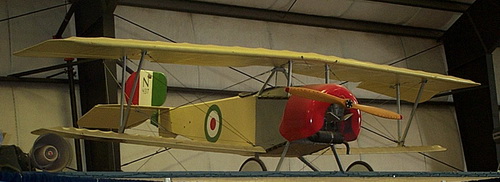 |
 |
|
#4: Two views of the replica Nieuport 11 "Bébè"
N 437 in Italian colors suspended above the museum's Gift Shop. I visited
the museum on a Saturday which is not the best time to see the exhibits in the
main hall because the museum sponsors a great number of weekend activities.
On this day, temporary walls were set up and exhibits were pushed out from the
center creating a crowded display area. |
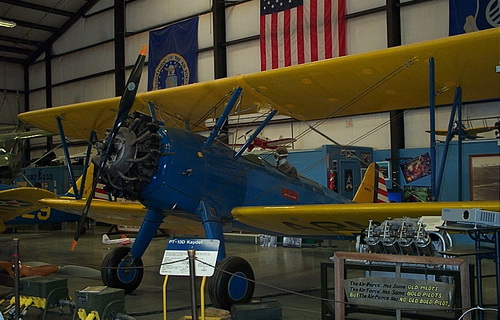 |
|
#5: Boeing Stearman PT-13D "Kaydet" U. S. Army 1940
primary trainer.. |
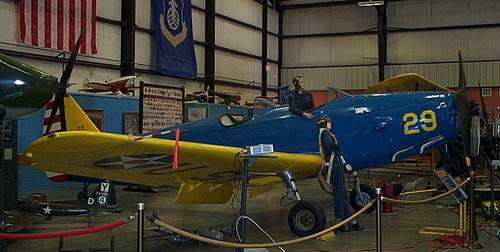 |
|
#6: Fairchild PT-19B "Cornell" low-wing primary
trainer famous for its part in the Civilian Pilot Training (CPT) program in the
United States. |
 |
|
#7: Bell P-39 "Airacobra" circa 1941. Total
built exceeded 9,000. Armed with four wing-mounted .30 caliber machine
guns, two upper cowling mounted .50 caliber machine guns, and one propeller hob
mounted 37mm cannon.. |
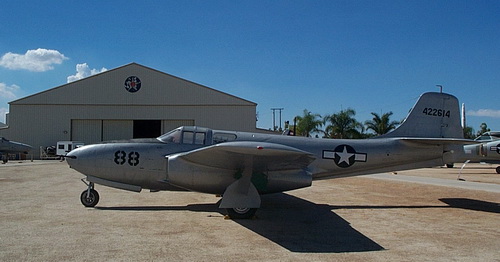 |
|
#8: Bell P-59A "Airacomet" single-seat twin-jet engine fighter.
First flew in October 1942. Bell was awarded a production contract for 80
aircraft of which 50 were completed before the contract was cancelled due to low
performance. Bell produced two versions: 20 P-59A and 30 P-59B (only
slightly improved than the "A"). Each was armed with one 37mm cannon with
44 rounds and three .50 caliber machine guns with 200 rounds each. |
 |
|
#9: Vultee BT-13 "Valiant" U. S. Army Air Corps
single-engine basic trainer of the late 1930s (U. S. Navy version was the SNV).
This was the second phase trainer after completion of the first, or primary
phase. Featured more powerful engine, radio equipment, landing flaps,
variable-pitch propeller, but with fixed landing gear. Over 11,000 of all
variants built. |
 |
|
#10: North American B-25J "Mitchell".
The original B-25 was proposed in 1938 and upgraded through World War II from
the "A" model to the "J" model which went into production in 1943.
Arguably, the best twin-engined medium bomber of World War II because of its
great range of multi-purpose uses. Almost 10,000 in all its variations
were built. |
 |
|
#11: Boeing B-17 "Flying Fortress". Although
out-built by the longer-range, larger-bomb load Consolidated B-24"Liberator",
the B-17 is the icon of the U. S. Army Air Corps air operations in Europe during
World War II. First designed in the mid-1930s, by the end of World War II
over 12,500 had been built. |
 |
|
#12: Boeing B-29 "Superfortress". Designed as
a super heavy long-range, high-altitude bomber, its late development and the
improving situation in Europe, made this an ideal bomber to cover the vast
distances of the Pacific. It's two most infamous roles were the
fire-bombing of Japanese cities and the dropping of the atomic bombs. |
 |
|
#13: Aichi D3A "Val" (replica based on the Vultee BT-13).
Appeared in "Tora, Tora, Tora!" as a Japanese dive bomber over Pearl Harbor. |
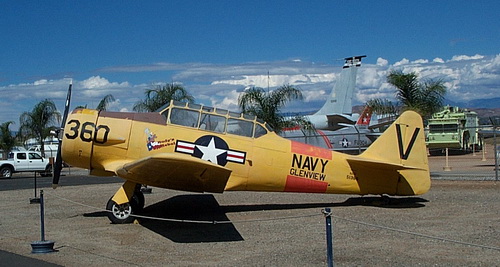 |
|
#14: North American AT-6 (USAAF)/SNJ-4 (US Navy) "Texan".
USAAF World War 2 advanced trainer of which well over 15,000 of all versions
were built. |
 |
|
#15: Douglas A-26 single-seat, twin-engine three-crew
attack bomber. This 1942 design was intended for low-level ground attack.
Nearly 2500 were built. |
I TOOK THESE PHOTOS IN SEPTEMBER 2010
--------------------------------------------------------------------------------------------------------------------------
REFERENCE
March Field Air Museum
Website:
www.marchfield.org Email:
info@marchfield.org
GO TO?
© Copyright by George Grasse















